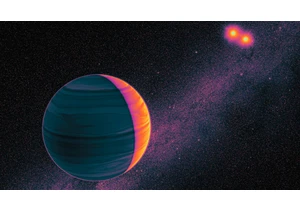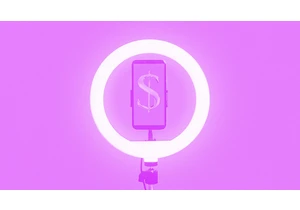During January’s unprecedented wildfires in Los Angeles, Watch Duty—a digital platform providing real-time fire data—became the go-to app for tracking the unfolding disaster and is credited with saving countless lives. Six months out from the fires, Watch Duty’s founder and CEO, John Mills, shares how his small nonprofit responded in the heat of the crisis and became a trusted source—even for government agencies. As wildfire season rages on and Texas recovers from devastating floods, Watch Duty’s story underscores both our growing vulnerability to natural disasters driven by climate change and the power of community-based solutions to keep us safe and connected when it matters most.
This is an abridged transcript of an interview from Rapid Response, hosted by Robert Safian, former editor-in-chief of Fast Company. From the team behind the Masters of Scale podcast, Rapid Response features candid conversations with today’s top business leaders navigating real-time challenges. Subscribe to Rapid Response wherever you get your podcasts to ensure you never miss an episode.
As I understand it, Watch Duty is a nonprofit and it’s an app that gathers information largely from volunteers, right? From regular people who are monitoring fires? It’s like a community?
Very much so. You can look at Reddit and Wikipedia in a similar way. The difference is, we do it live.
We have about 200 volunteers, about 20 paid staff, about 10 of those are radio operators themselves. But the information really comes from fire service radio.
So after going through a couple of disasters, you realize that there’s not a Starlink in every truck. The communication systems aren’t very good. The firefighters are in danger, and the only way to hear what’s actually going on is through them collaborating with each other in real time, through the radio.
And so we hear:
“Fire starting here, burning over this ridge.”
“Tankers and dozers are coming.”
“Holding the line to Highway 87.”
“Now the wind’s picking up, the fire’s spotting over the ridge.”
“It’s burning over so-and-so, houses are being impacted.”
You hear this live. There is no data source for this. There’s not a place for this to happen without us. So that’s how we do what we do.
And this community of volunteers, are they fire workers? Or are some of them just watching and sharing what they’re seeing?
A lot of them were 30-, 40-year wildland firefighters, dispatchers, reporter types, sons and daughters of firefighters who grew up in the fire service with the radio chatting in the background.
So it sounds like there was a community that was there that you tapped into. I understand you had to persuade them a little bit to see you as more than just a tech guy.
That’s the beauty of this. We just saw the human behavior and helped enable them to do it better. One of the fires I went through, which was one of the big ones in 2020, when the sky turned red up in Northern California, I was watching them on Facebook and Twitter already doing this. So they were kind of regionalized. There was someone in Red Bluff, someone in Redding, someone in SoCal, someone in Sonoma, Napa.
They were independently doing this. They knew each other. They would talk and collaborate a little bit, but they wouldn’t organize together. They weren’t adversarial, they just didn’t spend time really collaborating.
The innovation was really [to] convince them all to work together—that I was not [just] a techie. That I lived here, like them, in the same danger that they did. The key was to convince them that I’m here to help. I’m part of this community. I’m not sitting in my laboratory in Silicon Valley trying to profiteer off of your disaster.
And the information that they’re sharing, the app puts it into a more usable form or a more accessible form?
Yeah, it’s a great question. We didn’t change their behavior. They were always listening to radios and speaking the language of the fire service and putting it on Facebook and Twitter. What happens behind the scenes is actually a lot more data. There’s a lot of signals coming in, and a lot of it is very tactical and minor, and we don’t want that to go out on Watch Duty. And so they’re collaborating in Slack. They’re all talking and listening.
It’s very rare where there’s one person running an incident. There are many people in real time content editing:
“15 acres heading north-northwest. Was it 50 or 15?”
“Oh shoot, let’s wait for the next transmission, air attack’s about to be overhead.”
“We’re going to get a size-up on the fire.”
Then we deploy the information on Watch Duty. So in real time, they’re collaborating. Someone has the con, or control, and that person’s essentially incident commander.
So of the folks who are on duty or running the event at that time, some of them may be volunteers and some of them may be your staff people?
Yeah, it’s a mixed bag. Like many nonprofits, there’s paid staff and then there’s volunteers.
And a lot of our volunteers are now either changing careers or having a second career, because first, they contribute and they listen, and then they start to report, and then they become a staff reporter or a regional captain in the area and help run and collaborate certain parts of a state or a region. And then many of them actually become full-time employees.
During the fires I saw that Watch Duty passed ChatGPT as the No. 1 downloaded app. The traffic must have really caught you by surprise, just like the fire did.
Yeah, it did. Here’s the sad part: We’ve been the No. 1 app in the App Store three times. This time was the worst, by far.
Yeah, I mean, L.A.’s own emergency alert system, there was one, but it was buggy. It was sending false alerts. So it wasn’t just L.A. residents that were using Watch Duty, right? It was government officials and firefighters and the helicopter pilots. Everybody seemed to be on it.
Yes, the government also uses Watch Duty. We’re on all the big screens and all the emergency operation centers.
We’ve done something that others haven’t been able to crack, and it’s a usable format. So whether you’re a little old lady or a “hose dragger” or a “brush bunny,” as firefighters refer to themselves as in the wildlands, they all use it and it’s done something that we didn’t see coming.
We assumed that the government had all that information and they just weren’t telling us, not out of malice, but they’re busy, they’re trying to fight the fire.
It’s very granular, the information we share, and then quickly we realize that we’re getting emails from tanker pilots and dozer operators and others telling us that we give them more information than overhead gives them.
And that’s when we really realized this is a much bigger company than we ever thought possible.
It’s strange. Is Watch Duty’s success, I don’t know, an example of the government’s failure or the failure of tax-funded technology? Or was there just no investment in this?
Yeah, look, I mean, we work so closely with a lot of these government organizations and there’s failure abound. It’s everywhere. It’s how we voted as individuals. It’s the other software vendors who were selling lackluster products. It’s the government having no other options.
There are so many points of failure here. It just really compounded that day and it was very apparent how necessary we were.
It’s hard to just point blame at one person or one org. I know that’s what everybody wants is they want to blame the boogeyman so we can go fix it.
And it’s not just climate change, it’s bad forest management. It’s like there’s so many things that are all working against us here. It’s making this problem extraordinarily bad.
Chcete-li přidat komentář, přihlaste se
Ostatní příspěvky v této skupině

Child psychologists tell us that around the age of five or six, children begin to seriously contemplate the world around them. It’s a glorious moment every parent recognizes—when young minds start



Yahoo’s bet on creator-led content appears to be paying off. Yahoo Creators, the media company’s publishing platform for creators, had its most lucrative month yet in June.
Launched in M

From being the face of memestock mania to going viral for inadvertently stapling the screens of brand-new video game consoles, GameStop is no stranger to infamy.
Last month, during the m

The technology industry has always adored its improbably audacious goals and their associated buzzwords. Meta CEO Mark Zuckerberg is among the most enamored. After all, the name “Meta” is the resi

Even as AI becomes a common workplace tool, its use in
